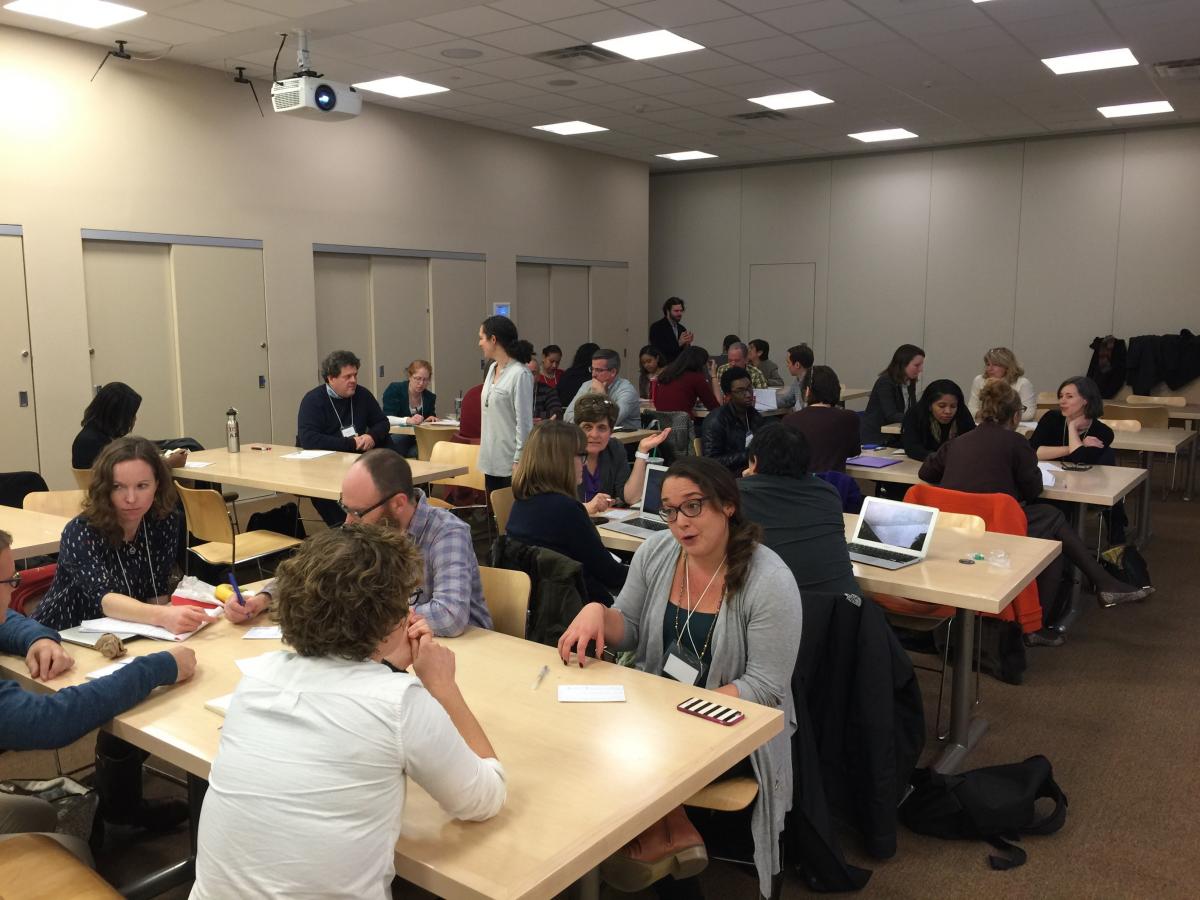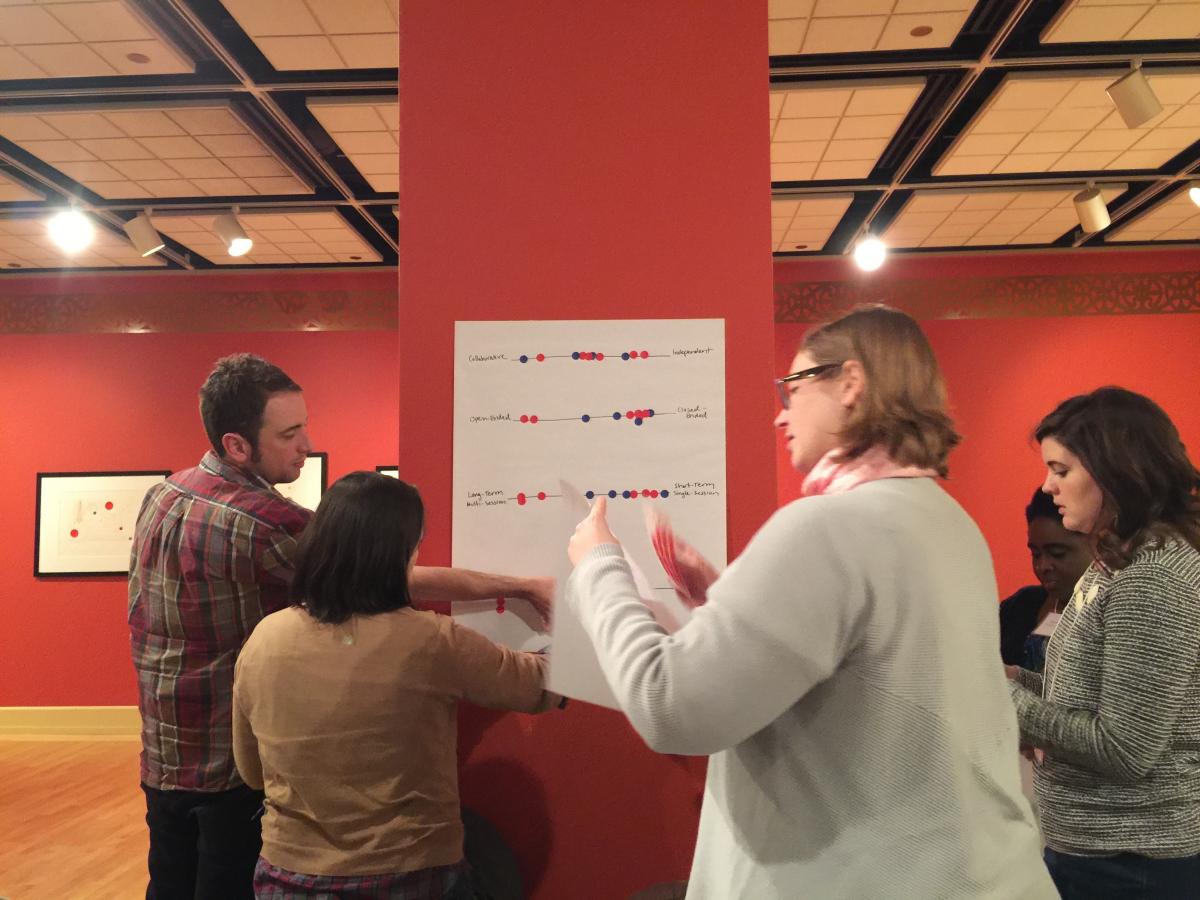Blog Posts | March 6, 2016
Share ThisMarch 7, 2016
By Peter Wardrip and Lisa Brahms
Children’s Museum of Pittsburgh
Makerspaces and maker programs in museums and libraries continue to build on momentum created by targeted efforts of federal, philanthropic, and private support. The Institute of Museum and Library Services (IMLS), in cooperation with the Children’s Museum of Pittsburgh, is wrapping up its project to create a framework to support learning in museum and library makerspaces. While final touches are being made to the publication that will illustrate the framework, our team members have been on the road workshopping tools to support museum and library professionals’ engagement in the elements of the framework.
In the fall of 2015, we (Peter Wardrip and Lisa Brahms) held three workshops in cities across the country to disseminate aspects of the framework as well as engage diverse library and museum professionals in discussion tools related to key aspects of the framework.

The framework to support learning in museum and library makerspaces seeks to help practitioners create the conditions of learning for their visitors, patrons, and program participants. The framework focuses on the purpose, people, and pieces and parts of a makerspace. This includes clarifying the purpose of the makerspace (Why a makerspace?), identifying the people who will support that purpose (What are their roles? What capacity is needed?), and what pieces and parts will create engaging experiences for learners to achieve the purpose (What tools are necessary? What materials make sense to use in light of your purpose and the talent, interests, and capacities of people?).
In October 2015, the museum hosted a two-day workshop that brought together over 25 library and museum practitioners from four neighboring states. In November 2015, in partnership with Chicago Public Library, over 35 participants came together from four Midwestern states. And in December 2015, in partnership with the American Museum of Natural History, over 30 participants from seven East Coast states came together. Through engagement with the discussion tools, participants worked with team members from their own institution, or practitioners from other organizations, to succinctly distill their goals for making and piece together what learning looks like in their space or program.

Workshops like these are showing the value of bringing together museum and library practitioners around a common theme. In addition, these workshops further communicate what many in the field know: maker-based learning experiences can come in many different forms with many different goals, and that explaining what learning looks like in those experiences is a difficult and important process.
In the coming months, IMLS and the museum will be relaunching the project website, www.makingandlearning.org, as well as releasing a publication that documents the framework. The website will include tools, resources, and information to support the development of rich and robust maker-based learning experiences in museums and libraries.
